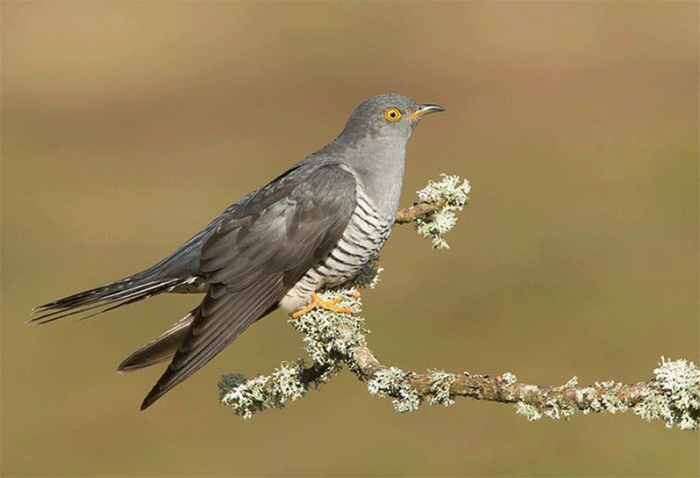When Defence Betrays: Cuckoo Outsmarts Bushchat Using Its Own Alarm Calls
New research reveals how the Common Cuckoo exploits the very behaviour meant to repel it - using the Gray Bushchat’s alarm calls to find hidden nests

A cunning twist in brood parasitism
In an extraordinary example of evolutionary cat-and-mouse, a new field observation from southwest China has shown that a Common Cuckoo (Cuculus canorus) successfully parasitised the nest of a Gray Bushchat (Saxicola ferreus) by exploiting the very behaviour the host bird used to defend its young. This rare and detailed account provides compelling support for the “host activity hypothesis” - the idea that brood parasites use cues from host behaviour to locate nests.
The study, conducted by Qiqi Liu and Wei Liang and published in Ecology and Evolution, documents a sequence of events in which a female cuckoo zeroes in on a well-hidden Gray Bushchat nest by responding to the host's defensive behaviour - namely alarm calls and aggressive posturing. Rather than deterring the intruder, these displays inadvertently guided the cuckoo to its target.
The silent watcher and the giveaway defence
At a field site in Liuzhi, Guizhou Province, on 2 May 2024, researchers recorded the female cuckoo perching quietly in a tree while host activity unfolded nearby. The male Gray Bushchat’s aggressive lunging and repeated alarm calls revealed the nest’s presence, allowing the cuckoo to gradually home in. Despite several thwarted attempts, and under heavy attack from the male bushchat, the cuckoo eventually succeeded in laying its egg - replacing one of the host’s eggs in the process.
This parasitic egg closely mimicked the host’s, with similar size and colouration - a vivid blue shell that visually blended in among the host clutch. In a dramatic flourish, the cuckoo was observed leaving the nest with a host egg in its beak, likely discarded to increase the odds of its own chick surviving.
Defence as a double-edged sword
The study highlights a critical paradox in anti-parasitism behaviour. While nest defence is commonly viewed as a host’s primary line of protection, this case reveals how it may also serve as a beacon to parasitic intruders. The cuckoo appeared to wait for overt defensive reactions before zeroing in on the nest - effectively turning vigilance into vulnerability.
These observations echo findings in other species, such as Brown-headed Cowbirds and Great Spotted Cuckoos, which are known to use similar strategies. The more aggressive and conspicuous the host response, the greater the chance of a parasite detecting nest location. In this case, the Gray Bushchat’s secluded nest - nestled on a steep, rocky slope - might have gone unnoticed were it not for the vocal and physical reactions of its defenders.
Implications for coevolutionary theory
This single, vivid encounter adds a valuable data point to the growing body of evidence illustrating the evolutionary arms race between parasitic birds and their hosts. While species like the Oriental Reed Warbler are known for highly cooperative and effective defence strategies, the Gray Bushchat’s solo male defence may be less effective, particularly when host numbers are low - as was the case here.
The researchers suggest that further studies could examine how cuckoos may actively provoke defensive reactions from hosts to uncover nest sites, and how hosts in turn may adapt their behaviour to reduce such unintentional signalling. One possible direction is reduced vocalisation or altered timing of nest visits to maintain concealment.
Conclusion: an evolutionary misstep or a calculated risk?
This compelling field observation paints a nuanced picture of brood parasitism. It reminds us that behaviours evolved for one purpose - in this case, nest defence - can have unintended consequences. In the high-stakes evolutionary game of deception and survival, even the best intentions can be used against you.
As parasitic birds continue to refine their strategies, and hosts adapt in turn, this delicate arms race offers a fascinating window into the dynamic complexity of avian coevolution.
July 2025
Share this story







